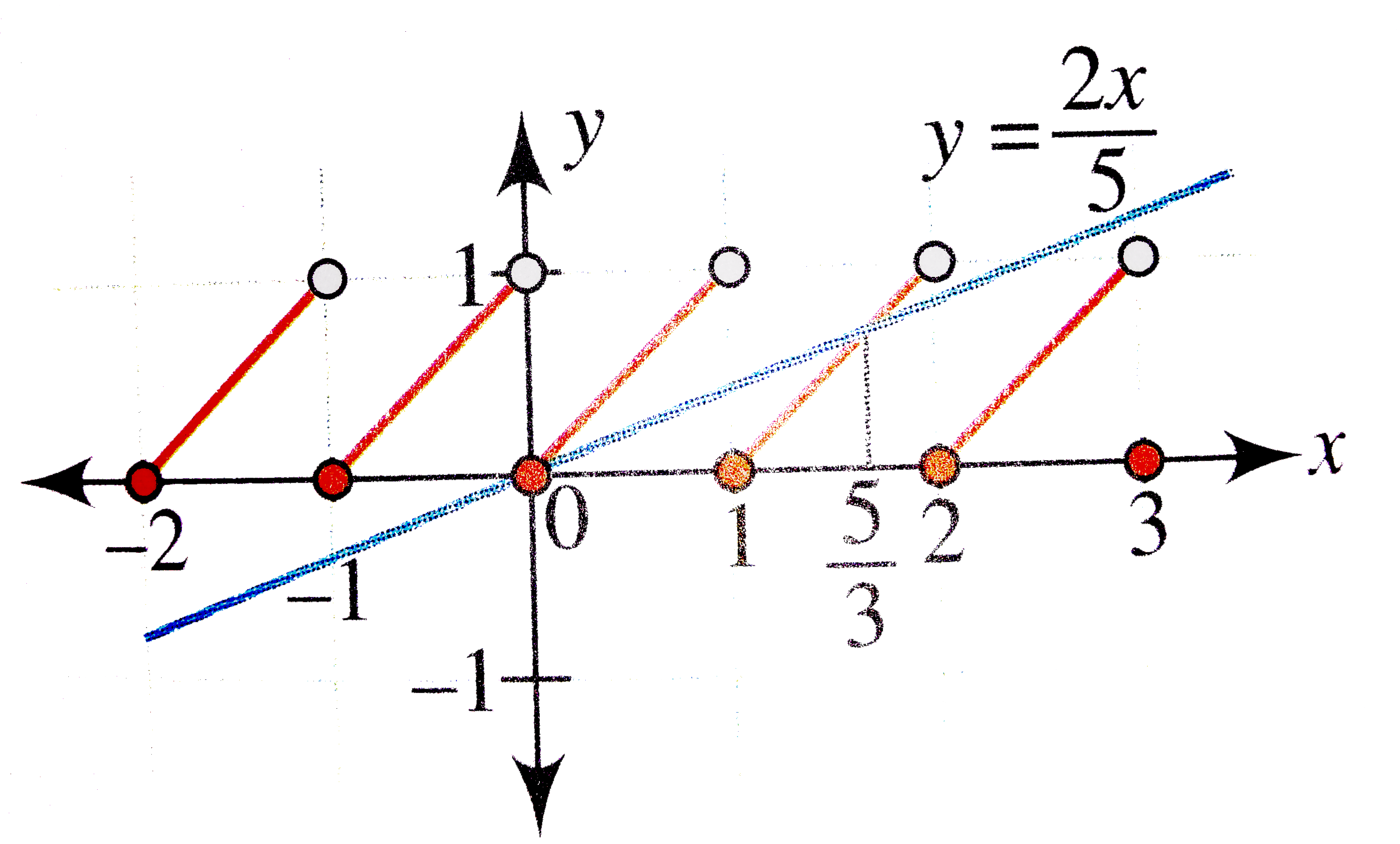Solve : 4{x}=x+[x](where [⋅] denotes the greatest integer function and {⋅} denotes the fractional part function.
Video Solution
Text Solution
We have 4{x}=x+[x]
or 4{x}=x+x−{x}
or 5{x}=2x
or {x}=2x5
Now draw the graphs of y={x}andy=25x.

From the graph, one of the solutions is x=0.
Other solution occurs where 25x=x−1
or x=53
|
Topper's Solved these Questions
- GRAPHS OF ELEMENTARY FUNCTIONS Book:CENGAGEChapter:GRAPHS OF ELEMENTARY FUNCTIONS Exercise:Exercise
Explore 34 Videos
- GRAPHS OF POLYNOMIAL AND RATIONAL FUNCTIONSBook:CENGAGEChapter:GRAPHS OF POLYNOMIAL AND RATIONAL FUNCTIONSExercise:Exercise
Explore 13 Videos
- GRAPHS OF TRIGONOMETRIC FUNCTIONSBook:CENGAGEChapter:GRAPHS OF TRIGONOMETRIC FUNCTIONSExercise:Exercise
Explore 22 Videos
Similar Questions
Knowledge Check
The number of values of x such that x,[x]and{x} are in arithmetic progression is equal to (where [.] denotes the greatest integer function and {.} denotes the fractional part function)
A0B1C2D4The function f(x)={x}sin(π[x]), where [.] denotes the greatest integer function and {.} is the fraction part function , is discontinuous at
Aall xBall integer pointsCno xDx which Is not an intergerThe function f(x)={x}sin(π[x]), where [.] denotes the greatest integer function and {.} is the fractional part function, is discontinuous at
Aall xBall integer pointsCno xDx which is not an integer
The function f(x)=[x]+√{x} , where [.] denotes the greatest Integer function and {.} denotes the fractional part function respectively, is discontinuous at
View SolutionConsider the function f(x) = {x+2} [cos 2x] (where [.] denotes greatest integer function & {.} denotes fractional part function.)
View SolutionIf f(x)=[2x], where [.] denotes the greatest integer function, then
View SolutionSolve 1x+1[2x]={x}+13where [.] denotes the greatest integers function and{.} denotes fractional part function.
View SolutionFind x if 4x,5[x],6{x} are sides of a triangle ( where [ .] denotes the greatest integers function and {.} denotes fractional part function)
View Solution

